
Caspar Friedrich The Wanderer Above the Sea of Fog Fine Art Canvas
Gaete, Miguel Angel. "From Caspar David Friedrich's Wanderer above the Sea of Fog to the ICloud: A Comparative Analysis between the Romantic Concept of the Sublime and Cyberspace." Journal of Comparative Literature and Aesthetics, vol. 43, no. 2, June 2020, p. 59.
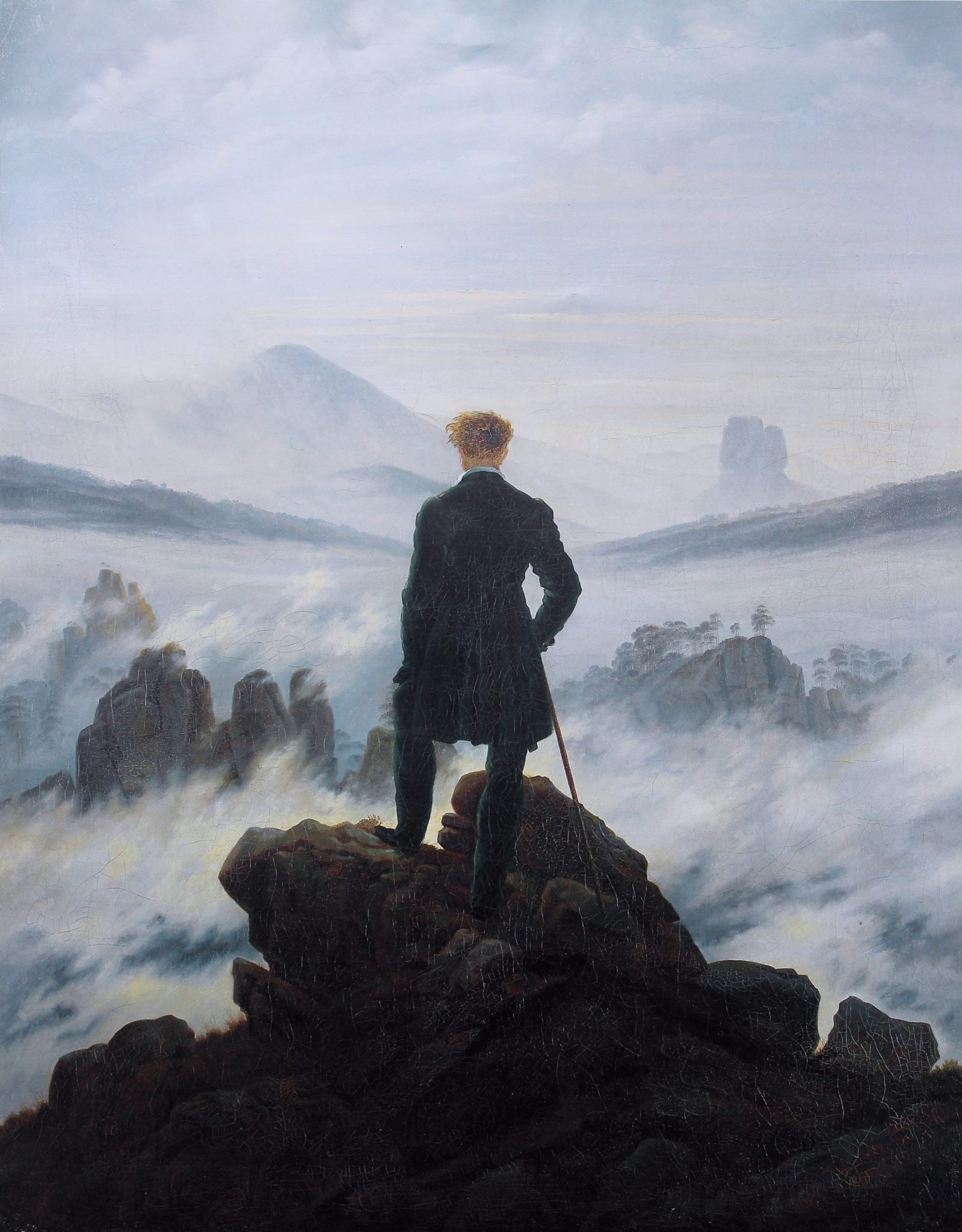
Wanderer above the Sea of Fog by Caspar David Friedrich LadyKflo
Wanderer above the Sea of Fog, or Der Wanderer über dem Nebelmeer, to give it it's original German title, is the most famous painting from the career of German Romanticist painter, Caspar David Friedrich. It was finished in 1818 and now resides at the Kunsthalle Hamburg in Hamburg, Germany.

The Wanderer Above The Sea Of Fog // Caspar David Friedrich // 1818 (36"W x 12"H x 0.75"D
Wanderer Above the Sea of Fog was painted in 1818 by German artist Caspar David Friedrich. Its perfectly captures the feeling of the sublime which was a prominent theme during the romantic period. Merriam-Webster Dictionary defines the sublime as " tending to inspire awe usually because of elevated quality (as of beauty, nobility, or grandeur) or transcendent excellence."
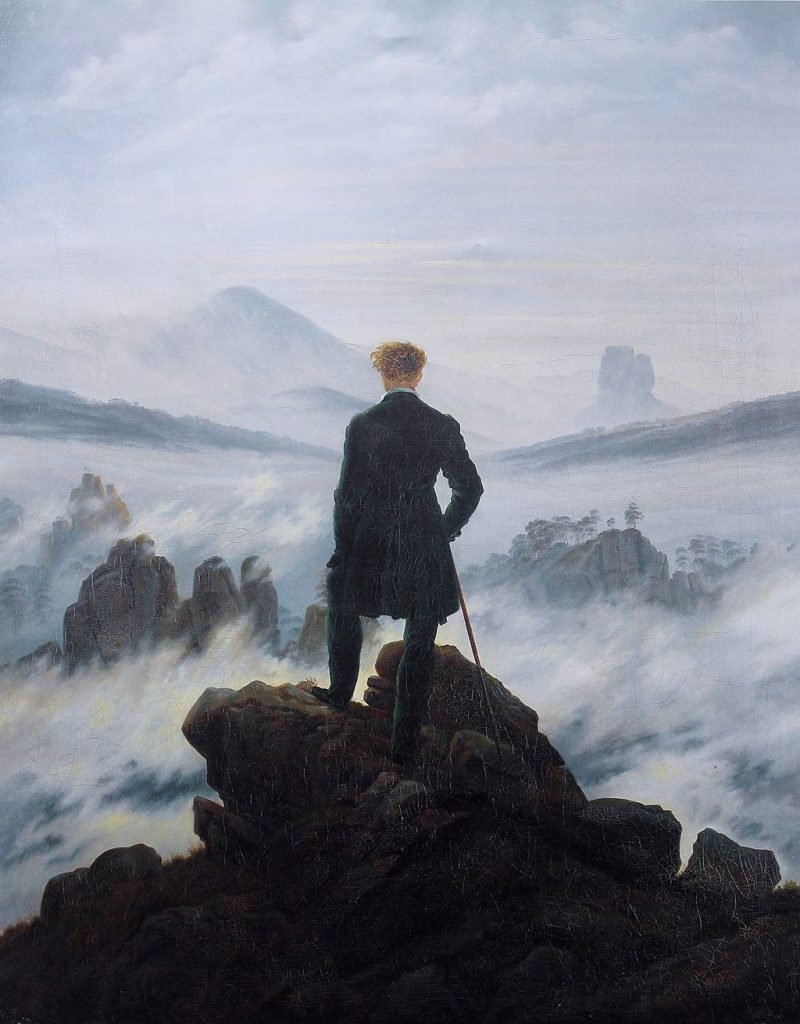
Caspar_David_Friedrich__Wanderer_above_the_sea_of_fog Kultur Geschichte(n) Digital
1. It was painted in the second decade of the 19th century. Wanderer above the Sea Fog is the most famous painting in the oeuvre of Caspar David Friedrich (1774-1840), the leading German artist of his time. He was born a year earlier than J.M.W. Turner (1775-1841), the English painter who specialized in landscapes and maritime paintings.

THE WANDERER ABOVE THE SEA OF FOG ArtExpress
In Wanderer Above the Sea of Fog (1818) Caspar David Friedrich places the wander-ing subject of the painting as an intervening medium that stands between us, the viewers, and the sublime mountain landscape being viewed, ļ fig. 1 1 This man, dressed in a long dark-coloured jacket and holding a walking stick or
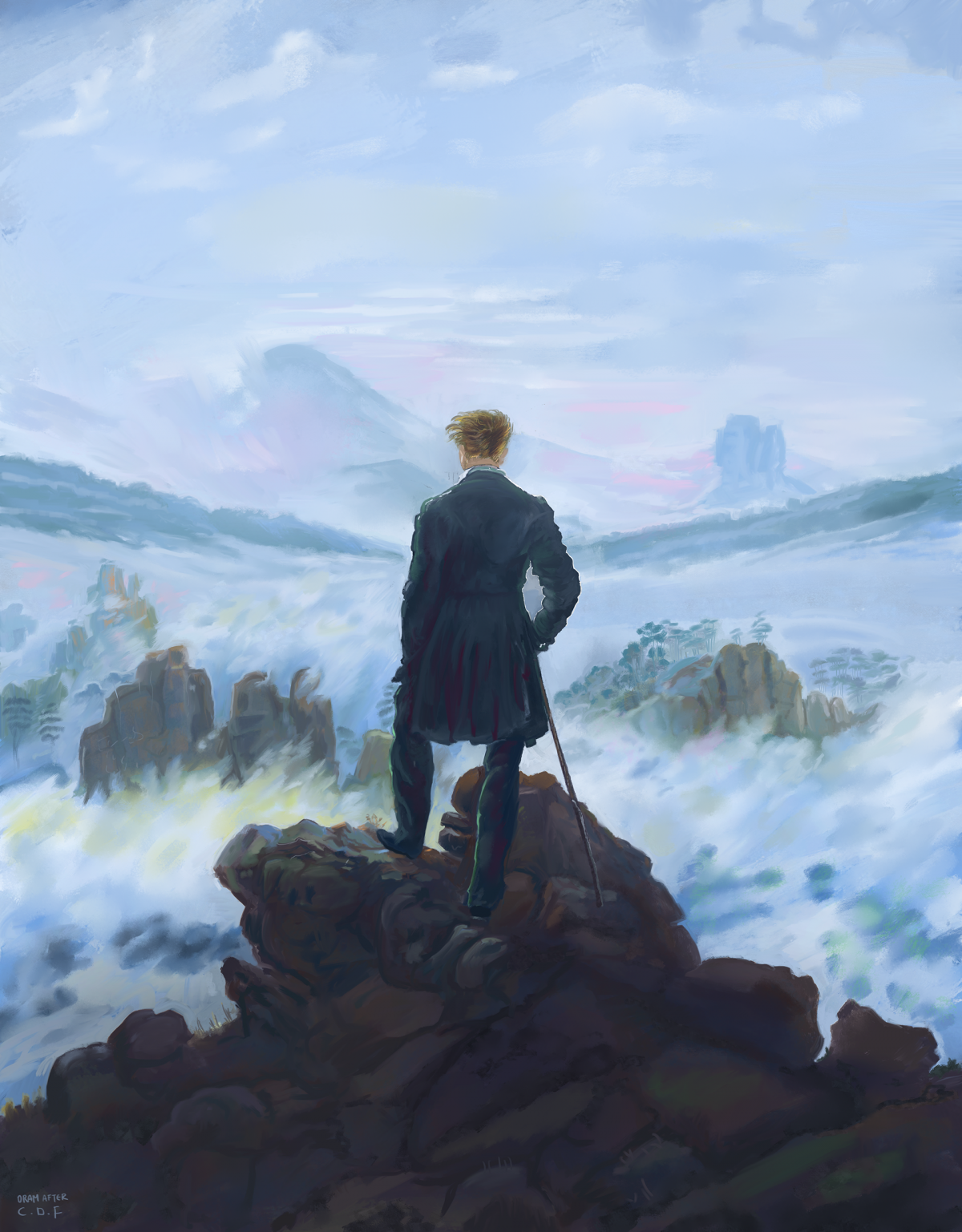
Wanderer above the sea of fog after Friedrich Luke Oram
Wanderer above the Sea of Fog (German: Der Wanderer über dem Nebelmeer), also known as Wanderer above the Mist or Mountaineer in a Misty Landscape, is an oil painting c. 1818 by the German Romantic artist Caspar David Friedrich. It has been considered one of the masterpieces of Romanticism and one of its most representative works.
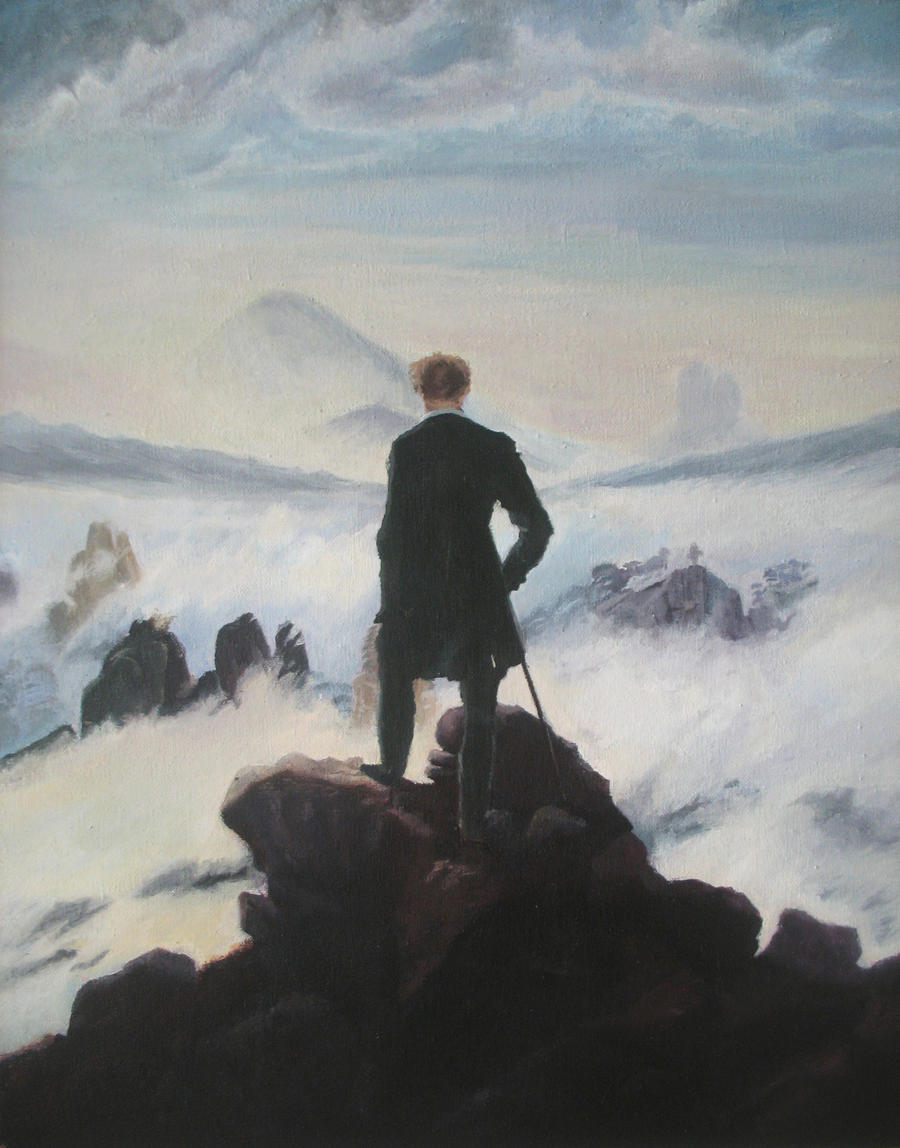
Wanderer above the Sea of Fog by adriengnotpiy on DeviantArt
Caspar David Friedrich's »Wanderer above the Sea of Fog« has inspired generations - worldwide. Friedrich fans from the most diverse countries reenact the painting again and again and share their photos via Instagram under the hashtag #thewandererabovetheseaoffog. We have contacted some of them.
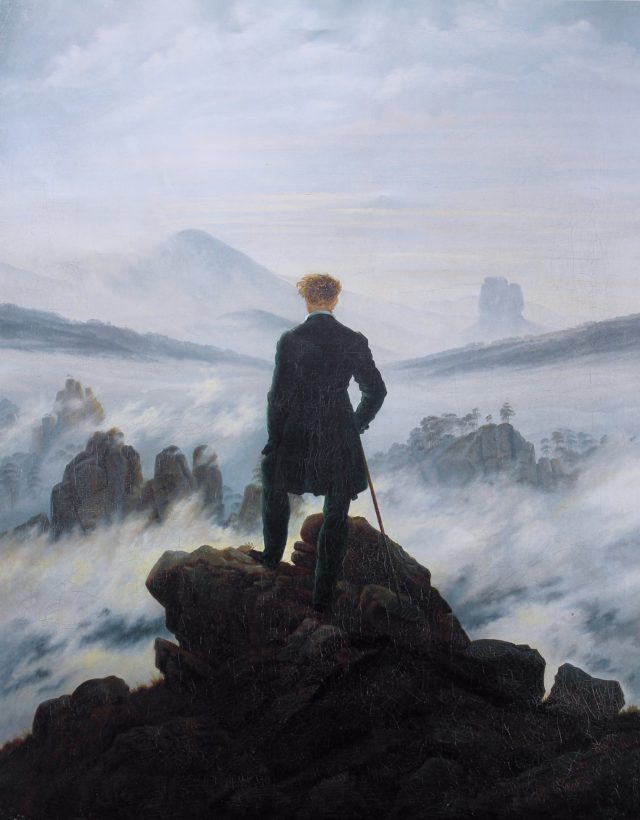
Wanderer above the Sea of Fog by Caspar David Friedrich LadyKflo
The wanderer above the sea of fog Caspar David Friedrich, 1818 98 cm 74 cm The wanderer above the sea of fog is a Romantic Oil on Canvas Painting created by Caspar David Friedrich in 1818. It lives at the Kunsthalle Hamburg in Germany. The image is in the Public Domain, and tagged Seascapes.

Wanderer above the sea of fog by Elisallysa on DeviantArt
Wanderer above the Sea of Fog is the quintessential Romantic artwork. The aesthetic began as a reaction against the Enlightenment values (logic, rationality, order) that partially contributed to the bloody, monarch-toppling French Revolution of 1789.

Wanderer above the Sea of Fog Hand Painted Oil Painting Wanderer art, Caspar david friedrich
Wanderer above the Sea of Fog. It is probably the best-known painting of German Romanticism: The "Wanderer over the Sea of Fog", created around 1818 by Caspar David Friedrich (1774-1840). The work shows a well-to-do hiker with a frock coat and walking stick standing on a rock in contemplation of a landscape of partly bizarrely shaped mountain.

The Wanderer above the Sea of Fog Caspar Friedrich Famous art, Art poster design, Paintings famous
118 In this post, I take a closer look at Wanderer Above the Sea of Fog by Caspar David Friedrich. It is an iconic work of Romanticism that features a man standing on the edge of the rocky terrain, looking out over the foggy landscape. I cover: Key Facts and Ideas Color and Light Composition Edges Key Takeaways Want to Learn More?

Caspar David Friedrich Wanderer above the Sea of Fog, 1818. Famous landscape paintings
A man stands on top of a crag of rocks, overlooking a valley cloaked in mountain mist. Other ridges rise through the fog, giving the impression of islands in a sea. The man himself appears to.

Caspar David Friedrich "Wanderer above the Sea Fog" 1818 ♄ Saturno ♄ Pinterest Acrylics
Background Caspar David Friedrich (1774-1840) was a key German Romantic painter. Artists from this movement expressed emotion in their work. Friedrich's childhood was scarred by the deaths of many of his friends and family. Later in his life, his paintings reflected a sense of desolation. But he also found meaning in religion.

Wanderer Above the Sea of Fog 4K wallpaper
Wanderer Above the Sea of Fog (c. 1818) by Caspar David Friedrich has become an iconic painting depicting the depths of solitude. It is one of the finest examples from the German Romantic art movement and the one that we will discuss in more detail in this article. Table of Contents [ Show] Artist Abstract: Who Was Caspar David Friedrich?

THE WANDERER ABOVE THE SEA OF FOG ANIMATED YouTube
When Caspar David Friedrich completed Der Wanderer über dem Nebelmeer, or Wanderer Above the Sea of Fog, in 1818, it "was not well received."So says gallerist-Youtuber James Payne in his new Great Art Explained video above, which focuses on Friedrich's most famous painting.In the artist's lifetime, the Wanderer in fact "marked the.

Reality Bites Bite 148 Caspar David Friedrich Wanderer above the Sea of Fog, 1818
1818 Alternative Names: Wanderer Above the Mist, Der Wanderer über dem Nebelmeer Height (cm): 98.40 Length (cm): 74.80 Medium: Oil Support: Canvas Subject: Landscapes Art Movement: Romanticism Created by: Caspar David Friedrich Current Location: Hamburg, Germany Displayed at: Hamburger Kunsthalle Owner: Hamburger Kunsthalle